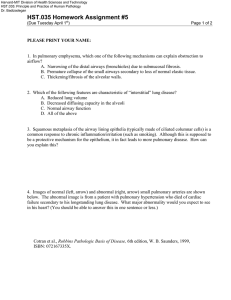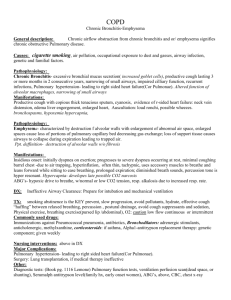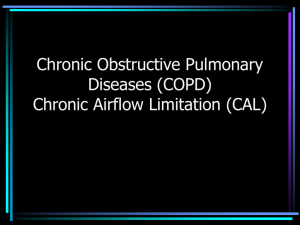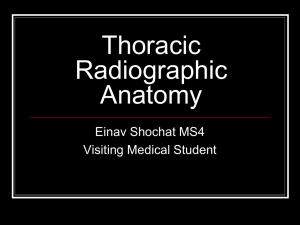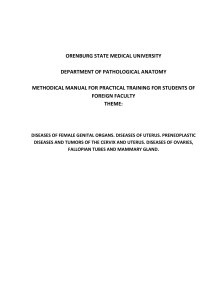Harvard-MIT Division of Health Sciences and Technology
advertisement
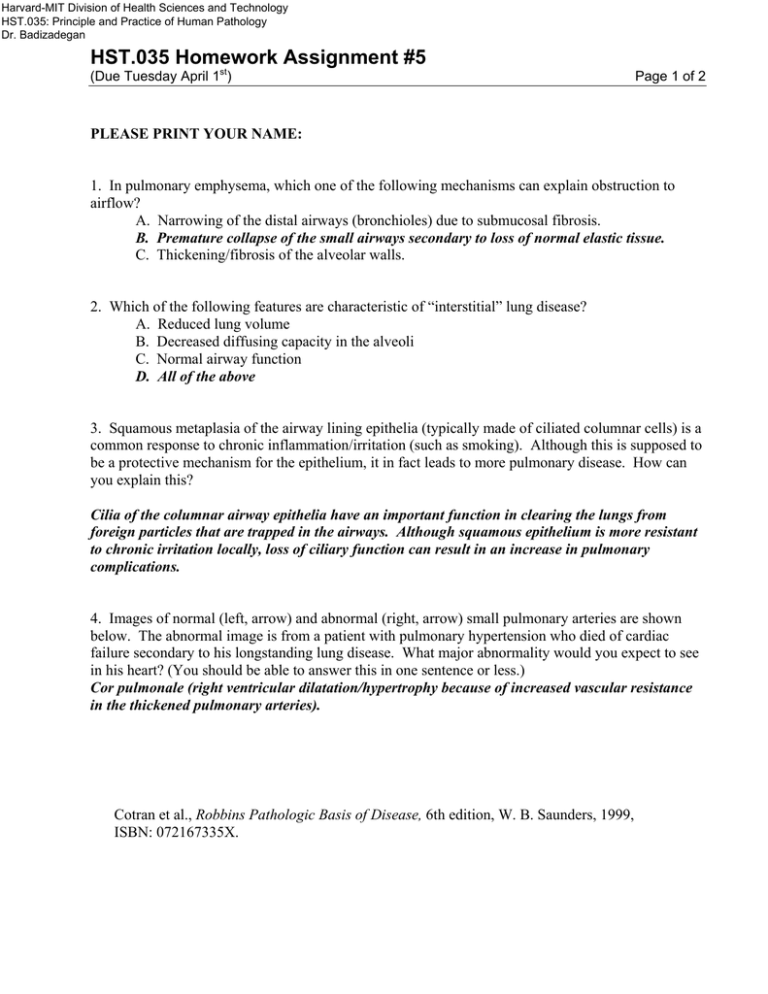
Harvard-MIT Division of Health Sciences and Technology HST.035: Principle and Practice of Human Pathology Dr. Badizadegan HST.035 Homework Assignment #5 (Due Tuesday April 1st) Page 1 of 2 PLEASE PRINT YOUR NAME: 1. In pulmonary emphysema, which one of the following mechanisms can explain obstruction to airflow? A. Narrowing of the distal airways (bronchioles) due to submucosal fibrosis. B. Premature collapse of the small airways secondary to loss of normal elastic tissue. C. Thickening/fibrosis of the alveolar walls. 2. Which of the following features are characteristic of “interstitial” lung disease? A. Reduced lung volume B. Decreased diffusing capacity in the alveoli C. Normal airway function D. All of the above 3. Squamous metaplasia of the airway lining epithelia (typically made of ciliated columnar cells) is a common response to chronic inflammation/irritation (such as smoking). Although this is supposed to be a protective mechanism for the epithelium, it in fact leads to more pulmonary disease. How can you explain this? Cilia of the columnar airway epithelia have an important function in clearing the lungs from foreign particles that are trapped in the airways. Although squamous epithelium is more resistant to chronic irritation locally, loss of ciliary function can result in an increase in pulmonary complications. 4. Images of normal (left, arrow) and abnormal (right, arrow) small pulmonary arteries are shown below. The abnormal image is from a patient with pulmonary hypertension who died of cardiac failure secondary to his longstanding lung disease. What major abnormality would you expect to see in his heart? (You should be able to answer this in one sentence or less.) Cor pulmonale (right ventricular dilatation/hypertrophy because of increased vascular resistance in the thickened pulmonary arteries). Cotran et al., Robbins Pathologic Basis of Disease, 6th edition, W. B. Saunders, 1999, ISBN: 072167335X. HST.035 Homework Assignment #5 (Due Tuesday April 1st) A Page 2 of 2 B 5. Two gross images of abnormal livers are shown above. For each of the statements below, choose A (left image), B (right image), or C (neither of the above). Do not try to make a specific diagnosis, but formulate a differential diagnosis (list of possibilities) for each of these cases. _A_ Can represent a long-term complication of chronic active hepatitis C infection _C_ Is the liver of a patient who died of severe hepatitis A infection _B_ Can be a primary malignant tumor of the liver _B_ Can be a metastatic tumor to the liver _C_ Represents an infarcted liver _A_ Can be a consequence of chronic biliary obstruction _A_ Can be associated with esophageal varices _A_ Is the liver of a patient with abnormal liver function tests 6. If you haven’t already done so, please write down the topic of your term presentation and at least 1-2 key references that will be used as resources for your presentation.
